Tamron Blogs
More Photo Tips | Video Gallery | Photo Gallery | Enewsletter sign-up
Photography Tips for Shooting Flowers
Images & Tips by Lisa Langell
High-Key style photography using a light board or light pad can be a fun and unique way of bringing a different perspective to beautiful spring blossoms! Light pads come in sizes ranging from A2 to A4. A2 are the largest size and allow for placement of the entire flower or flowers with extra room around the edges. A3 and A4 are smaller and more portable, but do not allow as much of the flower to be lit. Place the flower(s) on the board and shoot from above, over-exposing as needed to create a white background and perfectly exposed flowers.
Tip #1) Choose flowers that have semi-transparent petals, such as tulips, iris, daffodils and ranunculus. Arrange the flowers, stems and petals on the light board so that they have interesting compositions. Bend the stems, leaves and flowers so that the lines are visually pleasing.
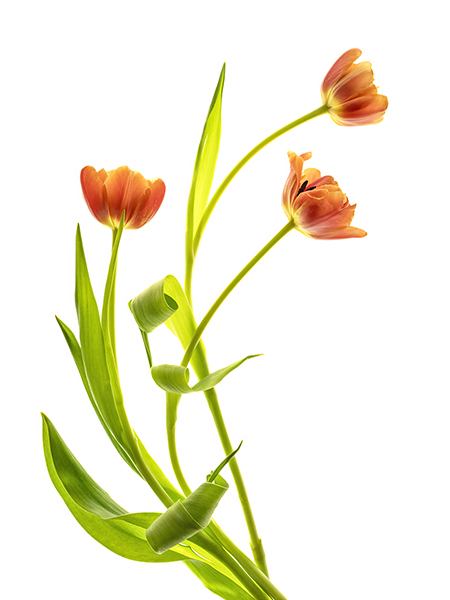
© Lisa Langell
Click image to view larger
Avoid excessive overlapping or the light cannot show through, leaving darker areas. Lenses that work best for this are those where you can focus at about 40-50mm, holding the lens (or using a tripod) about 2-4 feet above the subject.
Tip #2) While photographing with your lens parallel to the lightpad, focus on the flower petals or leaves that are raised above the board and closest to your camera lens. Apertures of approximately F8 to F11 will help ensure everything on your board is in focus. A Tamron 28-75mm F/2.8 Di III VXD G2 or Tamron 50-400mm F/4.5-6.3 Di III VC VXD lens would be ideal for either image above/below.
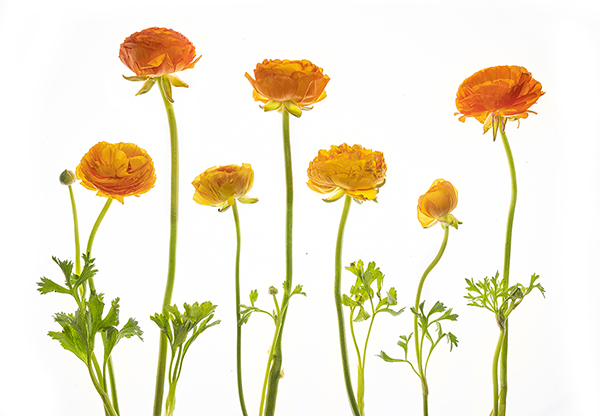
© Lisa Langell
Click image to view larger
Tip #3) It is acceptable in high-key style photography to have a few highlights “blown out” on the flower (note them in the petal closest to the camera), while also having a background that is white or nearly white. This is the photographer’s choice and so long as it is not excessive or unbalanced, it works with the style.
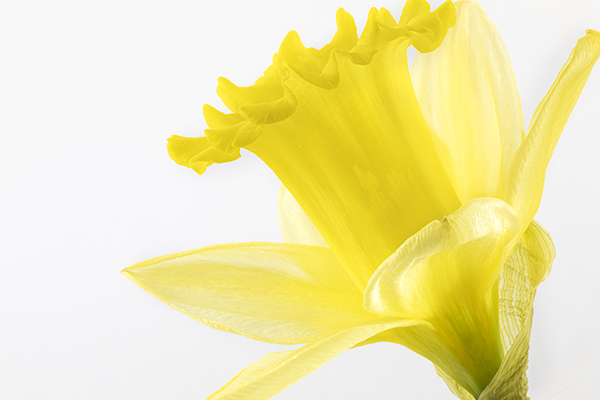
© Lisa Langell
Click image to view larger
Tip #4) For smaller light pads (e.g., A3 and A4), the flower may cover so much of the board that it is not possible to utilize many stems or leaves. In the daffodil and the ranunculus examples, close-ups are a better option. Get in close and use the backlight plus subtle ambient light from above to create a balanced exposure. Ambient light can be from an added or natural source.
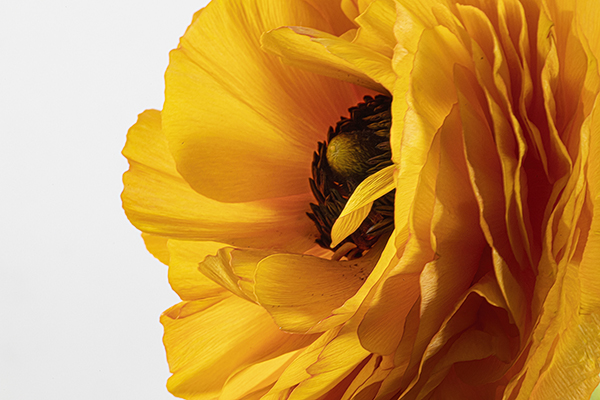
© Lisa Langell
Click image to view larger
Tip #5) Another way to elicit the dewy look of spring is to fill a spray bottle filled with water and mist the flower petals. This adds an extra visual element to your high-key styled images. Focus is important, so be sure to put your focal point right on the water droplets closest to the camera.
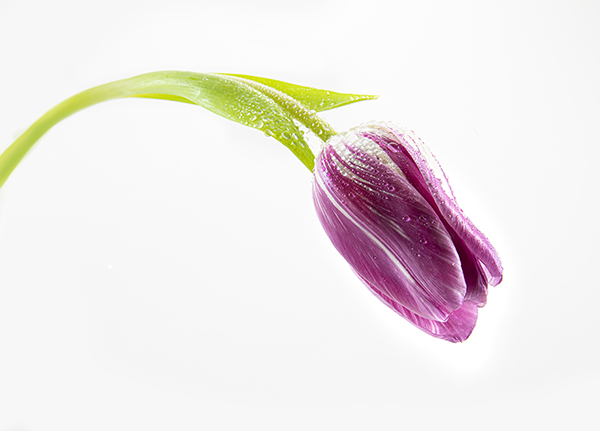
© Lisa Langell
Click image to view larger
Tip #6) In post-processing, it is not uncommon for adjustments to be made to highlights or shadows. Photos of flowers with more density in the leaves or petals often need their shadows lifted using a mask in Lightroom or Camera Raw, or the Dodge tool in Photoshop to create a balanced look, such as the case with the ranunculus and tulip.
More Photo Tips | Watch Videos | Learn More About Tamron Lenses | Photo Gallery